Fungus gnats, spider mites, aphids, thrips, caterpillars. These are all pests that can plague cannabis growers and devastate crops. Thankfully, there are tips, tricks, and beneficial insects to help keep your plants safe.
Step one! Know your enemy.
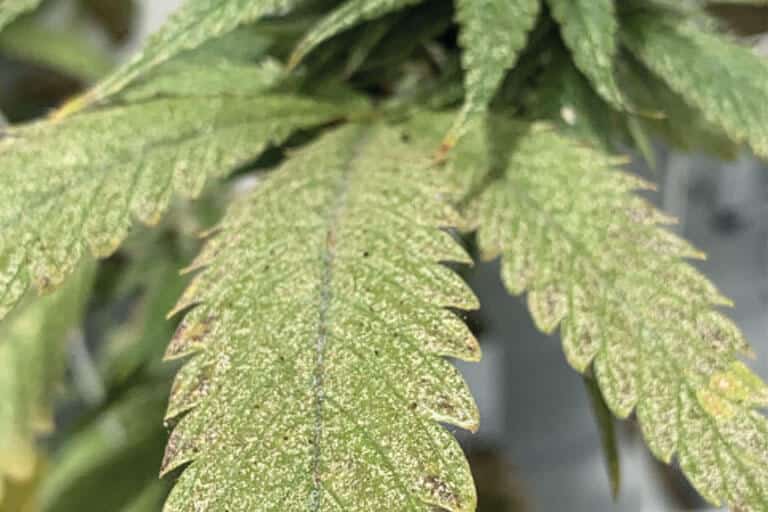
This is severe two-spotted spider mite damage. All of those little white-yellow pin pricks are places where the mites have fed on the leaf, damaging the cells in the process. If even a few spots are observed, it’s a good idea to look at the back of the leaf to see if any spider mites are present. Let’s zoom in a little bit.
Spider Mite
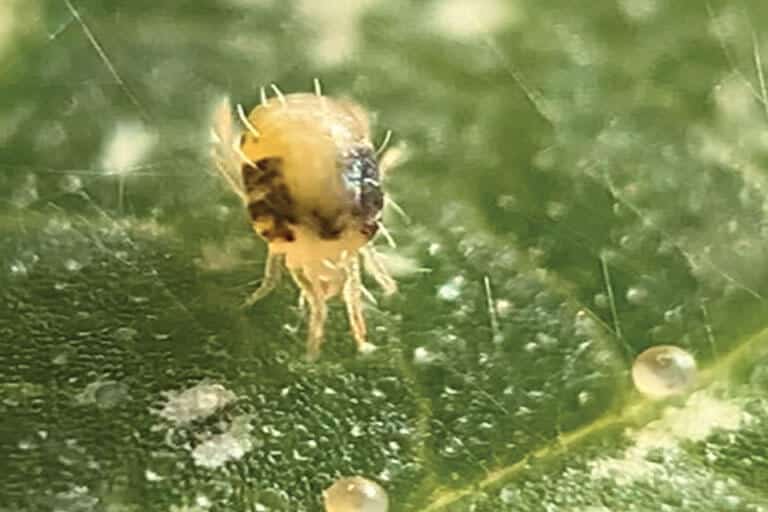
There we go. This is enemy number one, the adult two-spotted spider mite along with some eggs. While difficult to see with the naked eye, they’re very much visible with 30-60 times magnification, so a loupe is a good tool to use to recognize pests while scouting plants. These mites also produce webbing similar to spider webs, hence their name, which is another good indication that spider mites are present.
For spider mites, there are quite a few predators that can be used, but two of the most common are Neoseiulus californicus and Phytoseiulus persimilis. P. persimilis is a specialist predator and will only eat spider mites. They’re voracious predators that, in the right conditions, will out populate spider mites and completely decimate a population. We don’t recommend them for preventative care, however, since they have such a large appetite. For prevention, N. californicus is an amazing choice. They lay in wait for spider mites to come by and then pounce, dominating their prey.
Fungus Gnat
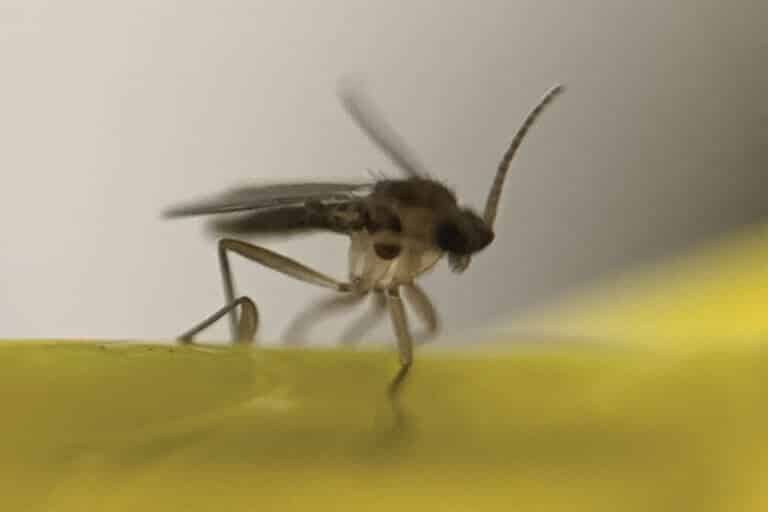
This is a fungus gnat, easily recognized by their elongated bodies. They’re common in grows, and can be found in both their adult form, as pictured above, and their larval form, which is the real pest.
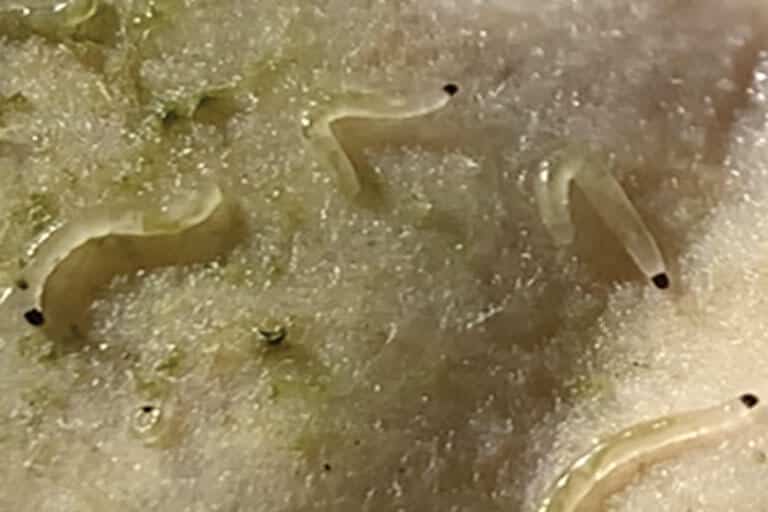
The adults may be annoying, flying around, but they don’t cause any direct harm to the plants themselves. The larval stage, characterized by their translucent bodies and dark heads, can cause root damage if numbers get high enough. They can also transmit diseases to the plants.
For fungus gnats, an all-star predator is the nematode, Steinernema feltiae to be specific. They invade the bodies of the fungus gnat larvae and can fix fungus gnat infestations in as little as two to three weeks. Predatory soil mites called Stratiolaelaps scimitus are also an amazing choice with the added benefit of eating thrips pupae, the soil dwelling stage, as well.
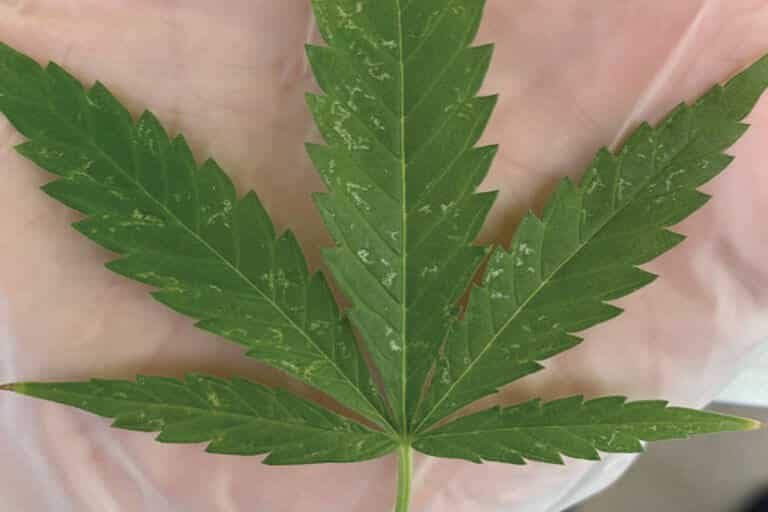
This irregular, silvery damage is due to thrips. Whereas spider mite damage looks like pin pricks, thrips damage is more likely to be long, jagged, and almost silvery in tone.
Thrips
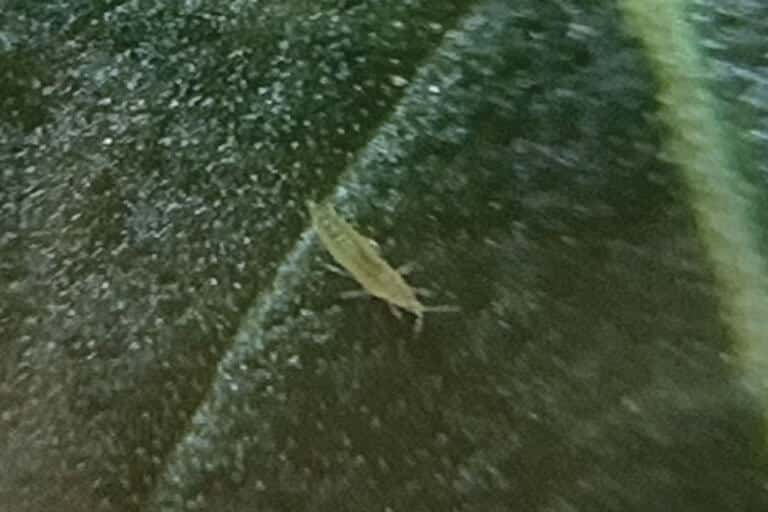
All of that damage is caused by this little pest. This is an immature thrips. As it gets older, the colors will darken and the body will become less translucent, but it is still recognizable as a thrips at this stage. They spend part of their life on leaves and part in the soil.
Thrips have a few different natural predators, but some of the most effective are Amblyseius swirskii, Neoseiulus cucumeris, another type of foliar predatory mite, the aforementioned Stratiolaelaps scimitus predatory soil mites, and Orius insidiosus. Orius are generalist predators, meaning that they’ll eat a whole range of pests should they come across it, but thrips are their favorite meal.
Aphids
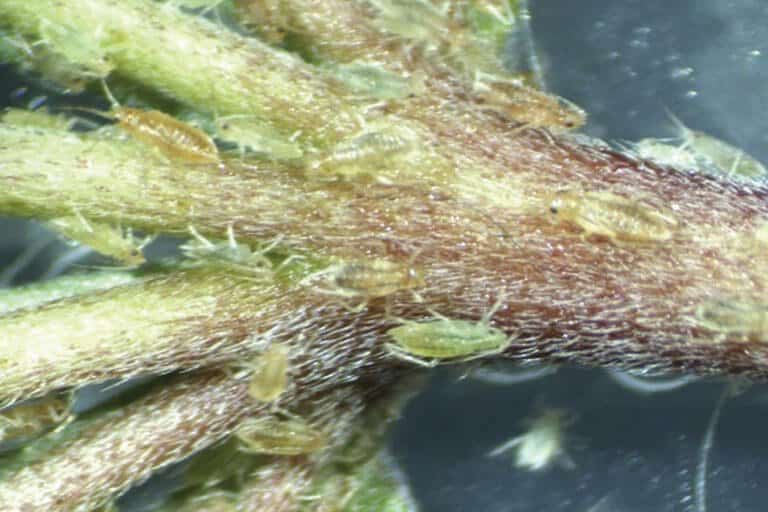
These are cannabis aphids. While they may not leave distinct looking damage on plants like other pests, they can reduce vigor and growth and even kill young plants. As seen in the picture, they can appear in several different colors and sizes and can generally be found on the underside of leaves and on stems.
With aphids, there are a few different predators that can help manage populations. Two of the most effective of which are Green Lacewing larvae and parasitic wasps, such as Aphidius colemani. One Green Lacewing larvae can eat hundreds of aphids before it matures, and parasitoid wasps have amazing searching behavior and can cover large areas.
Caterpillars
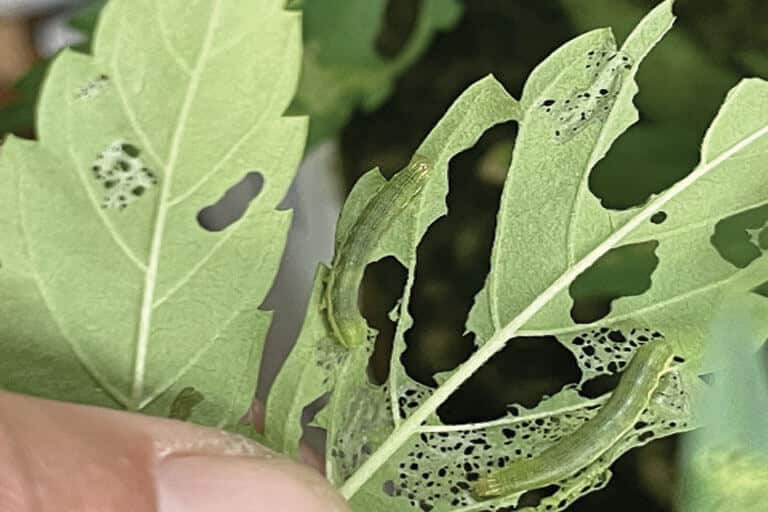
Finally, there are these ravagers. Caterpillars, aka the offspring of various types of moths and butterflies. They can completely destroy crops if left unchecked. Out of the main cannabis pests, these are the only ones that you’ll likely see just eat away entire sections of the leaves.
One of the best products for keeping your crop free of caterpillars is actually Bt, or Bacillus thuringiensis. It’s a spray that’s completely harmless to any creature with an acidic gut, like humans and most animals, but deadly to those with alkaline guts, such as caterpillars. There are also parasitoid wasps that are excellent caterpillar predators as well, if you know which type of caterpillar the pests are.
Notable mentions without pictures also include the russet and broad mite, both of which require at least a 60X lens to see at all. Swirskii is an excellent predator for russet mites, with cucumeris, californicus, and andersoni being notable mentions as well. These predators also hunt broad mites.
Most common
These aren’t all of the pests that love to eat cannabis plants, but these are the most common, and hopefully this guide will help in both identification of pests and natural solutions to get rid of them. Each grow is different, and sometimes, especially with outdoor gardens, the standard beneficial insects might not do as well as a specialized, less common one. If you’re looking for assistance or just curious, we’re more than happy to help. Just send us a message through our contact form at shalepeakhorticulture.com, and we’ll make sure that you get the right beneficial for your grow. If you already know what you need, head on over, too. We sell all of the beneficial insects mentioned at highly competitive prices.





